Has it really only been 2021 for one month? With so much going on over the last few weeks, we could all be forgiven for thinking that we’ve been living in this new decade for years! Despite everything that has gone on in this eventful month, however, Sophie, Rebecca, and Robin have been reading plenty of books that they are excited to share with you all.

American Midnight: Tales of the Dark, Collected by Laird Hunt
Sophie’s first book was one she meant to read over the Halloween season but never got to, instead she picked it up for the Winterween readathon. American Midnight is a collection of spooky short stories written by American authors between 1835 and 1965. There are many well-known names here including Edgar Allan Poe, Mark Twain, and Edith Wharton, but also a few names she was unfamiliar with such as Emma Frances Dawson and African American author Zora Neale Hurston.
There are a couple of genuinely outstanding stories in this collection. “Home” by Shirley Jackson (author of The Haunting of Hill House) was probably Sophie’s favorite while “The Yellow Wallpaper” by Charlotte Perkins Gilman – the only story here that Sophie had read before – was as haunting and disturbing as she remembered from the last time around.
Unfortunately, many of the others fell short. Sophie found the majority to be closer to tedious than terrifying. “Young Goodman Brown” by Nathanial Hawthorne (author of The Scarlet Letter and descendent of “the only judge from the Salem witch trials who never repented his involvement”) would probably have been shocking to those living at the time of its publication, but comes across as rather dull today, while the horrors of “The Mask” by Robert Chambers were rendered ineffective by sheer predictability. Poe’s “The Masque of the Red Death” in which a plague is ravaging the land could have been a truly disturbing read in the Covid era, but instead felt overly bogged down by description. Sophie did, however, appreciate the underlying message and felt it should have been made required reading for billionaires last March!
Due to their age, most of the stories here are available freely as separate books and Sophie would recommend picking up those individual titles that appeal to you rather than this collection.

From Here to There: Inventions That Changed the Way the World Moves by Vivian Kirkfield, Illustrated by Gilbert Ford
Next up for Sophie was From Here to There: Inventions That Changed the Way the World Moves by Vivian Kirkfield. This young readers’ book explores the stories and people behind inventions from rockets to wheelchairs and digs into how those creations came to be.
The book contains nine chapters, each one focused on a specific invention and the person or people who made it a reality. Chapter one covers French brothers Joseph and Étienne Montgolfier who created the hot air balloon and successfully flew it in front of King Louis XVI, but Sophie’s favorite chapters were the chapters on Bertha Benz who (along with her husband Karl) developed and popularised the gasoline-powered automobile, Robert Goddard who created the first successful liquid-fuel-propelled rocket, and Raye Montague, an African American woman who was the first female program manager of ships in the United States Navy.
From Here to There is illustrated throughout with beautiful and colorful full-page pictures that bring the stories to life. While the majority of the people included in this book are white men (10 out of the 12 are men and at least eight of those are white – Sophie couldn’t find confirmation either way for two), the illustrations help to add extra diversity to its pages. Each chapter also includes extra notes about the history behind and impact of these inventions and their creators, pointing out for example, that Greyhound hired women to drive its buses during World War II, giving many of them their first experience of working outside the home.
While some of the names in this collection were familiar – Sophie knew Robert Goddard and George Stephenson well – others were new to her including Karl Drais (invented the bicycle), Eric Wickman (founder of the Greyhound bus), and the duo of Herbert Everest and Harry Jennings (developed user-friendly wheelchairs). Sophie now wants to read a full biography of Raye Montague and she imagines that this book will inspire many other readers to want to dig deeper as well.
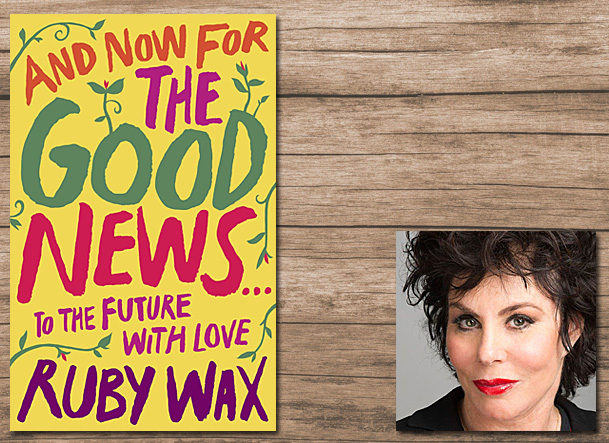
And Now for the Good News by Ruby Wax
Sophie’s third book this month was And Now for the Good News by Ruby Wax. Ruby Wax has been a well-known celebrity figure in the UK for decades but has recently become more well-known as a mental health advocate and promoter of mindfulness. In her latest book, she explores the good news going on around the world that is so often buried beneath scandals and other depressing headlines and shares short, anecdotal stories from her own life.
The book is divided into sections, with the first five looking at positive enterprises taking place across five areas: Community, Business, Education, Technology, and Food. Rather than simply sitting at home and Googling about this, Wax has traveled the world to visit these places, taking in a sustainable, eco-village in South Africa, student-led schools in Finland, and attending weekend retreats run by businesses looking to truly support their staff. Everything about these people and places is uplifting, reminding us that no matter how it may seem, there are still people out there fighting to make positive changes.
That being said, for a book whose title claims to be all about the “good news”, there’s a surprising amount of bad in here. Of course, much of that is arguably necessary to help put the good into context, but if you were hoping for a book to let you forget about the more terrible things going on in the world, this is not it. Included are harrowing accounts from refugees and reminders of the far-reaching control wielded by tech corporations like Facebook. However, when these sections are immediately followed up by others exploring how we are on the path to making things better, hopefully, you can walk away feeling inspired to help rather than simply numb and powerless.
And Now for the Good News reminded Sophie just how much we need to improve the world we live in, but left her wanting to dig in deeper and find a place where she can really make a difference herself.

My Monster and Me by Nadiya Hussain, Illustrated by Ella Bailey
Sophie’s fourth book was My Monster and Me by Nadiya Hussain who won The Great British Baking Show in 2015 and has gone on to become a successful author. At the beginning of My Monster and Me, Nadiya reveals that she has always suffered from panic disorder and that this book is designed to help children understand concepts including anxiety, and panic from a young age so that they can recognize them and get help quickly.
In the story, we meet a young boy who introduces us to his monster. His monster has always been around but lately, it has started causing problems – stopping him from playing with his toys or going out with friends, and ordering him what to do. The monster hides from his parents and big brother so they can’t take it away.
One day, the monster becomes particularly huge and grumpy, causing the boy to run to his grandma’s house and tearfully tell her how his monster just won’t leave him alone. Grandma listens and as she does so, the monster begins to shrink, eventually becoming pocket-sized and much easier to control. By the end, the boy feels far more in control. Yes, his monster is still with him all the time, but now it resides in his pocket and if it does decide to get out and cause mischief, he knows how to take back control.
This is a brilliant story that uses a helpful and easy-to-understand metaphor to share a great message with young readers and their parents. While talking won’t immediately solve all problems, encouraging children to share with someone when they feel worried is a great first step to solving those bigger issues and taking control of whatever scary monster is bothering them, and it’s good advice for adults too! Sophie highly recommends this one to all families.
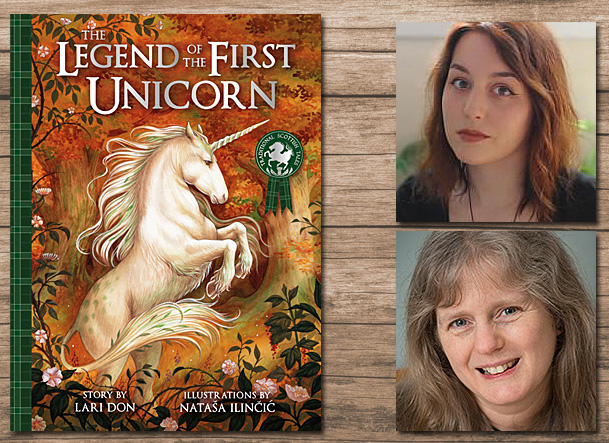
The Legend of the First Unicorn by Lari Don, Illustrated by Nataša Ilincic
Sophie’s fifth and final book for this month was The Legend of the First Unicorn by Lari Don. The unicorn is the official national animal of Scotland and this book is from the Kelpies range which promotes traditional Scottish tales and which has become something of a favorite of Sophie’s in recent years.
At the start of the story, young Prince Donald of Scotland has lost his smile and no matter how many cakes he is given, picnics and parties he is invited to, and sculptures that are carved for him, nothing will bring it back. The court magician decides to create a magic animal for the prince, but his work goes wrong, and instead, he creates a frightening creature that he banishes from the castle. That night, however, his granddaughter Hana sneaks in and creates the beautiful animal she has seen in her dreams for her friend Donald before freeing it.
The next day, Hana shows Donald the unicorn from a balcony, and the two spend the following days walking through the woods together trying to find it. Soon they discover that the magician’s creature is also stalking the unicorn and together, they must stop it to save the first unicorn and restore Donald’s smile.
This is a simple tale that merges the core of the legendary Scottish unicorn myth as told by Duncan Williamson with elements of unicorn lore from around the world to create a story that both children and adults will love. The illustrations are traditional looking watercolors which reminded Sophie of the picture books she read as a child, but that will still hold appeal for today’s young readers.
Sophie would recommend this book to all unicorn lovers, as well as those interested in myths and folktales from around the world.
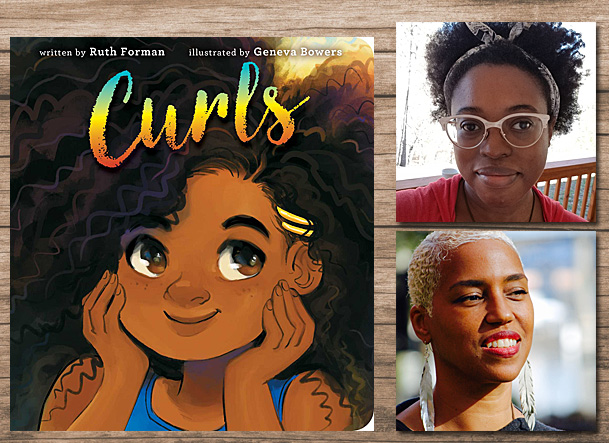
Curls by Ruth Forman, Illustrated By Geneva Bowers
Curls by Ruth Forman is exactly the book Rebecca wishes she had seen when she was a little girl. Growing up, Rebecca was given the same haircut: cropped short like a boy. Curls were not celebrated, they were tamed or hidden. What a delight to see this book for a new generation of curly girls!
Ruth Forman, an African-American woman, was dismayed to hear her preschool-age daughter was unhappy with her curls and dark skin. She set out to create a book for the very youngest in her community to see themselves represented in healthy, beautiful ways. Rebecca loves the result!
This simple board book for babies and toddlers has positive and sweet words describing curly hair. Not only does the main character little girl have curls, but her friends and caregivers as well. This is an essential aspect of the book because it shows a community that playfully embraces their hair in various styles.
The illustrations are round and adorable with bright cheerful colors. The backgrounds are a soft, gentle wash. The book begins with the girls enjoying getting their hair ready. Then they go out and play and have fun with friends outside.
Although Curls is aimed at girls with darker skin, any girl with curls can see themselves here. Highly recommend it for 0-4 years old.
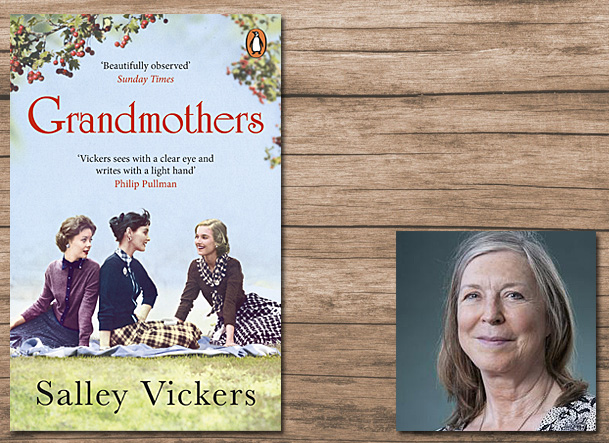
Grandmothers by Salley Vickers
Robin usually finds himself reading SFF most of the time these days, so Grandmothers by Salley Vickers was something of a breath of fresh air. It was read as part of his book club and despite him being the only male (and under 50) in the group, it was his suggestion that they read it. Beneath the somewhat saccharine cover is a book of great subtlety, filled with complexity and warmth.
One of Robin’s all-time favorite books is Whatever Makes You Happy by William Sutcliffe; a book about 20/30 somethings and their relationships with their mothers. Robin wanted to read Grandmothers to see the opposite point of view.
It did not disappoint. The novel features three grandmothers of sorts, linked by chance meetings; women more or less alone in life, connected to the world through their grandchildren (in one case there is no familial connection but a simple friendship). The women have experienced loss, and for the two that have children, the connection to their own children is fractured. Fractures that inevitably affect how they can interact with their grandchildren.
The biggest take home for Robin from the novel is that whilst grandparents love their grandchildren unconditionally, they often have no say in the decisions that govern their lives. It’s an important observation, one that Robin hadn’t considered before.
At the core of Grandmothers is Nan, a woman entirely in control of herself and her destiny. The book has a subtle metaphysical theme with Nan at its center. Grandmothers is artfully crafted; on the surface, it’s very light but is made up of many layers. Robin was constantly delighted but allusions and observations about the nature of family life. He’ll definitely be hoping to work his way through Vickers backlist. After all, she has a book called The Librarian.

Dark Art by Steve Feasey
Robin read the first book of the Whisper of the Gods series, Dark Blade, in 2019. He loved it; finding it to be reminiscent of the David Eddings books he enjoyed so much growing up. Reminiscent but very much updated.
Would Dark Art be as good? Very much yes! Feasey takes a slight sideways shift in direction. Whereas Dark Blade was a fight between “good” and “evil,” albeit, with shades of grey in the characters’ motivations, Dark Art is a more thoughtful character-driven novel.
The villain of the piece, Kelewulf, has decamped to the brutal kingdom of Hasz only to find things are very different from how he imagined them to be. He hoped to find an object that would bring him world domination, but perhaps an unforeseen kindness will stay his hand?
Meanwhile, in a political move, Lann is sent to a neighboring pirate enclave to find allies to aid the kingdom of Strom against an invasion from the restless Hasz nation. What he finds will send Lann and his sword off on a whole new adventure.
Kelewulf’s and Lann’s story revolve around each other, before reaching an intriguing climax, that looks to set the saga spinning off in an unexpected direction.
Dark Art is different in tone from its predecessor and it does feel a little like a holding novel to introduce a quest of more epic proportions. Nevertheless, there is more than enough intrigue and inventiveness to captivate the reader. Robin finds himself hanging off the edge of a cliff, and can’t wait to find out where the fall will take him!
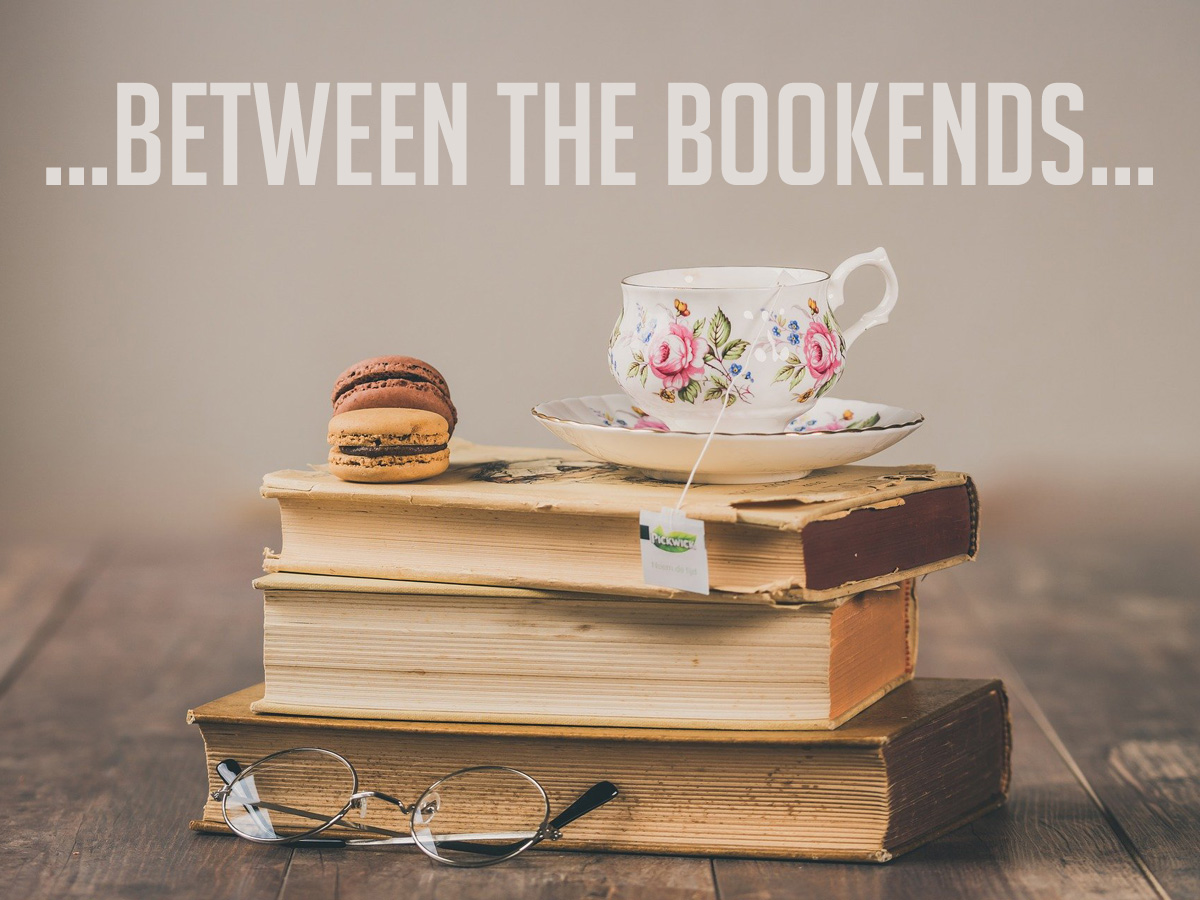




thanks for this great amount of information from this blog
Curls by Ruth Forman is exactly the book I wishes I had seen I was a little girl.
Thanks for creating it. Looking forward for the solution.
nice post
Thank you for the suggestion. I love the “From Here to There” book. Thank you a lot.
thank for this great blog
Thank you for the suggestion.
2048
Great selection of books! Thank you! We can afford to read more now, especially during a pandemic! I’m a student who also works and sometimes I order financial essays here https://getfinanceessay.com/ to keep up with everything.